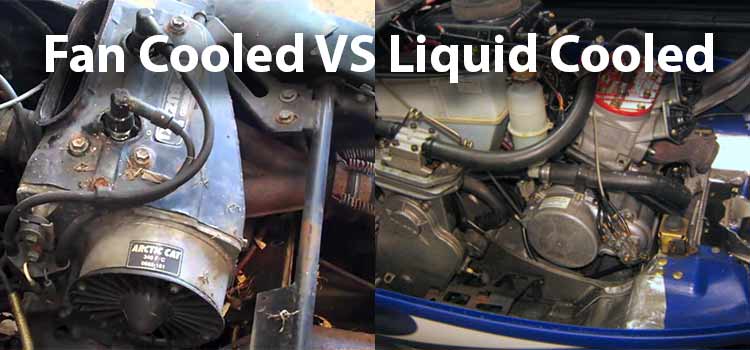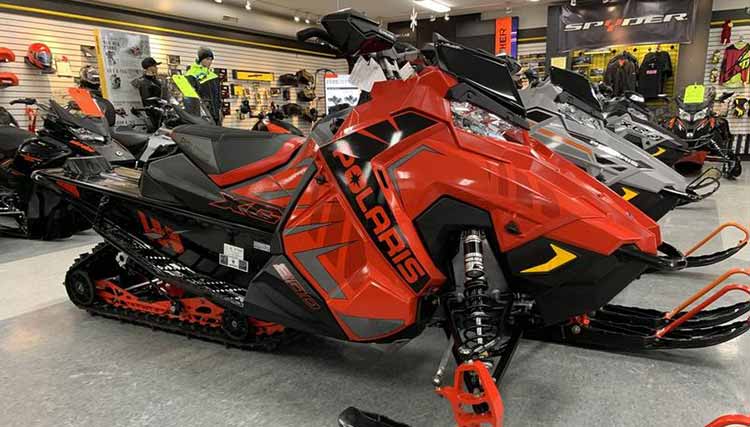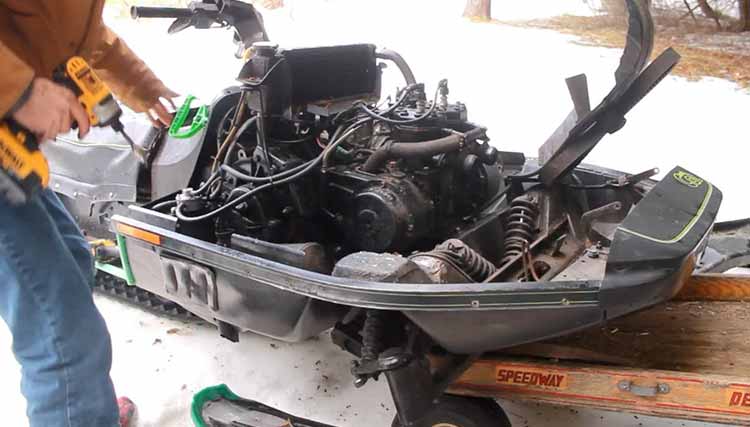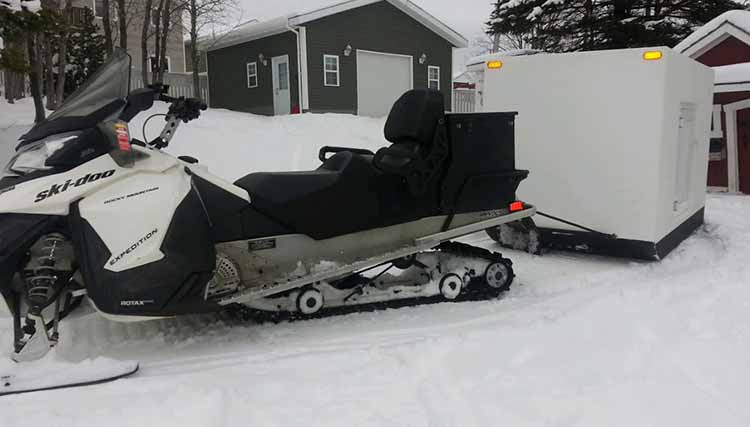
Which is better, fan cooled or liquid cooled snowmobiles? This debate has been ongoing for years, and the reality is that each type of sled has its advantages and disadvantages. The best option really depends on what you’re looking for in a machine. Let’s dive in and figure out what might work best for you.
What’s the difference between liquid cooled and fan cooled snowmobiles?
As the name implies, the difference between these two types of snowmobiles is in their cooling system. Going way back, early snowmobiles were neither liquid nor fan cooled: they were air cooled. That meant there were simply fins on the engine that helped cool it down and maintained proper operating temperature. Because these early machines were small and didn’t generate much heat, they did not need an active cooling system. Simple air movement during operation provided all that they required.
As snowmobiles got bigger over time, they required more active cooling systems, so manufacturers added a belt-driven fan that forced air onto the cooling fins of the engine to keep it from overheating. This became what we now call the fan cooled snowmobile. In addition to forcing cool air past the motor, the resulting warm air from the engine compartment would flow through the cowling under the windshield and also help warm the rider. Fan cooled sleds were a vast improvement over their air cooled counterparts, but eventually advancements in snowmobile engines required more cooling.
Liquid cooled snowmobiles started to show up in the 1970’s, and were a result larger engines that couldn’t be adequately cooled with fan systems. Instead of a fan pushing air over the engine, the liquid cooled system uses a liquid coolant that’s circulated through the interior of the engine and through heat exchangers which use snow to provide cooling. A water pump moves the coolant through the system, and snow thrown up from the track melts on the heat exchanger and lowers the temperature of the coolant. It’s a much more advanced system that provides excellent cooling and is needed for larger, hotter running high performance machines.
So how do you decide whether a liquid cooled or fan cooled snowmobile is right for you?
Let’s look at some of the factors.
Performance – Liquid Cooled Snowmobiles Provide Superior Performance
A liquid cooled snowmobile is superior in performance, as it is able to keep key components at the proper operating temperature and support the hard riding, high demands of larger engines that perform incredible amounts of work: high speeds, fast acceleration, high rpm’s, etc. Fan cooled snowmobiles lose performance as they heat up, and can’t compete with liquid cooled machines.
Cost – Fan Cooled Snowmobiles are Cheaper than Liquid Cooled
The fan cooled snowmobile is cheaper to buy, particularly when purchased new. This is because there are fewer moving parts required for the cooling system and it’s cheaper to manufacture. Years down the road, however, the cost difference between liquid cooled and fan cooled snowmobiles in the used market doesn’t seem to be as dramatic.

Maintenance – Fan Cooled Snowmobiles are Cheaper and Easier to Maintain
A fan cooled snowmobile is cheaper to maintain as there is no coolant to change, no water pump and no issues with busting coolant lines or putting a hole in the heat exchanger. A simple rock or stick busting a heat exchanger can leave you stranded in the middle of nowhere pretty quickly.

Engine Life – Liquid Cooled Engines Last Longer
Although they are more costly to maintain, liquid cooled snowmobiles do have longer engine life. Since they run at a more consistent operating temperature, there is less expansion and contraction of internal parts and they wear more slowly. That’s a good thing, because although they won’t need a rebuild as often as fan cooled machines, the rebuild will be more complex and cost more.

Weight – Fan Cooled Snowmobiles are Lighter
Fan cooled snowmobiles weigh less, as they don’t have coolant, heat exchangers, pumps and associated parts. If weight is a key factor, fan cooled takes the edge.
Riding conditions and Uses – The Ultimate Factor
Your specific use case may be the most important factor in determining which type of snowmobile is right for you.
Trail riding – a liquid cooled snowmobile is probably best for trail riding, although fan cooled machines can work okay in this environment too. Long periods of high engine demand from long trips usually requires a liquid cooled snowmobile for the best results.

Mountain climbing/performance/racing – liquid cooled snowmobiles definitely take the edge with any type of performance application where engines are going to be pushed hard and generate lots of heat. Fan cooled sleds used in this type of situation will wear fast and underperform.

Ice Fishing – When ice fishing or riding around on a farm, taking kids along at slow speeds, etc, a fan cooled snowmobile is the best choice. You don’t need the added cost or weight of a liquid cooled machine, and often the surface of lakes and ponds in winter time doesn’t have the required powdery snow that a liquid cooled snowmobile needs on its heat exchangers to cool properly. Your machine will also probably experience longer periods at idle and slower speeds, both of which are not great for liquid cooled sleds.
Utility – depending on the application, both liquid and fan cooled snowmobiles can have advantages for utility use. Generally speaking, more fan cooled snowmobiles are designed to be utility machines. They often have smaller engines and are geared lower, or offer lower selectable gears, in order to accommodate pulling heavy loads. They run at lower speeds and often have to operate in low snow or packed snow conditions, both things that are difficult to do effectively with a liquid cooled engine. In some cases, though, liquid cooled utility snowmobiles can work well. The larger engines can help with pulling heavier loads. Also, some have radiators with cooling fans in front of them (as opposed to heat exchangers) like a traditional car or tractor would have, allowing them to provide the best of both the liquid and fan cooled worlds.

Will be operating snowmobile on local logging trails with deeper soft snow and inclines.
We will be exercising dogs which travel at 5 to 9 kph ( 3 to 5 mph) requiring low engine rpm and could be towing a sled.0
What are your thoughts about a fan cooled engine with a high / low transmission in this application of sledding?
Hello Richard!
I hope you are doing good and enjoying the snowmobiling season.
Fan cooled snowmobiles perform better than snow cooled snowmobiles when you need to run them at low speeds. I think you do not need too much power, and given your application, a fan-cooled snowmobile will work fine.
Towing a sled is something that requires more power. As you mentioned, you will be running your sled at slow speeds. A fan-cooled snowmobile might not give you enough power to tow a sled. It can be done if the distance is not long. If the distance is long, you should consider snow-cooled snowmobiles.